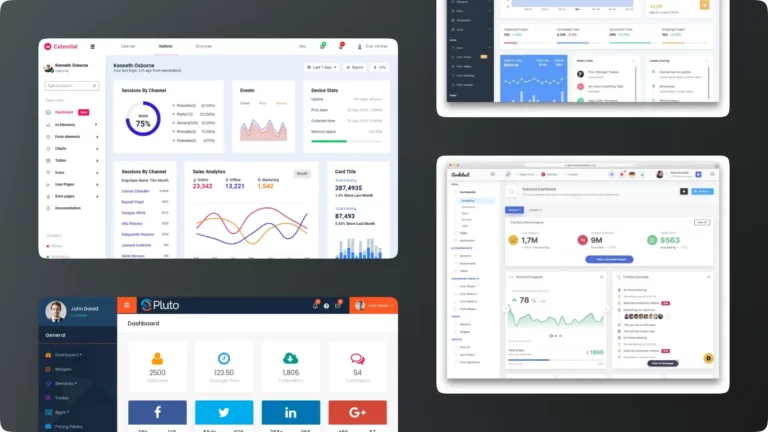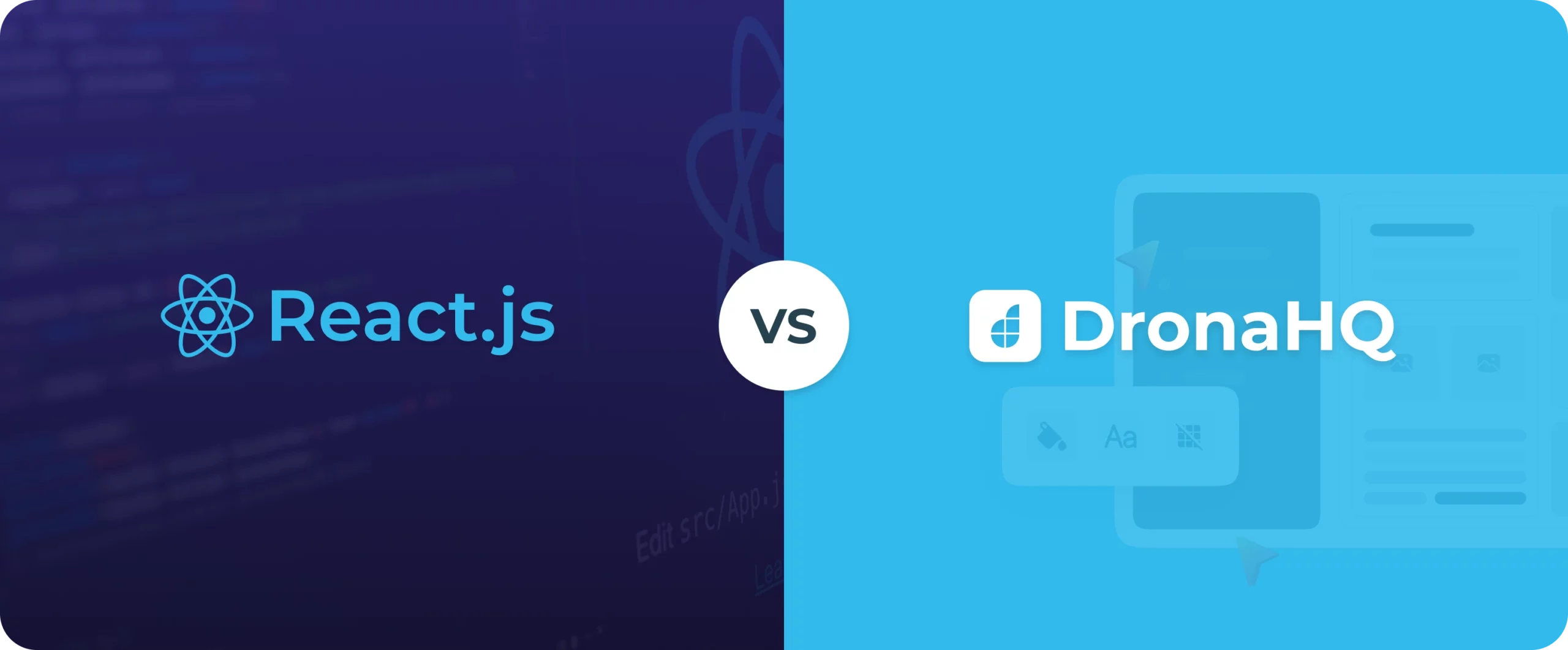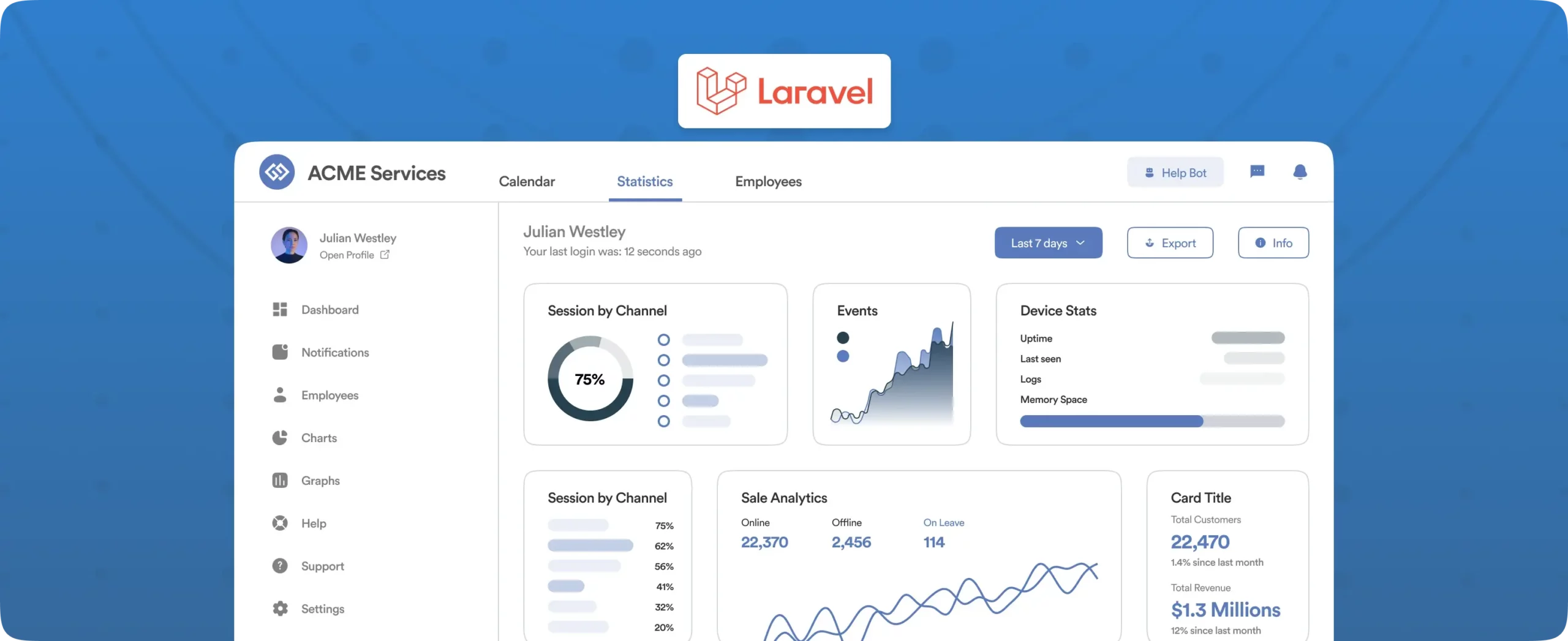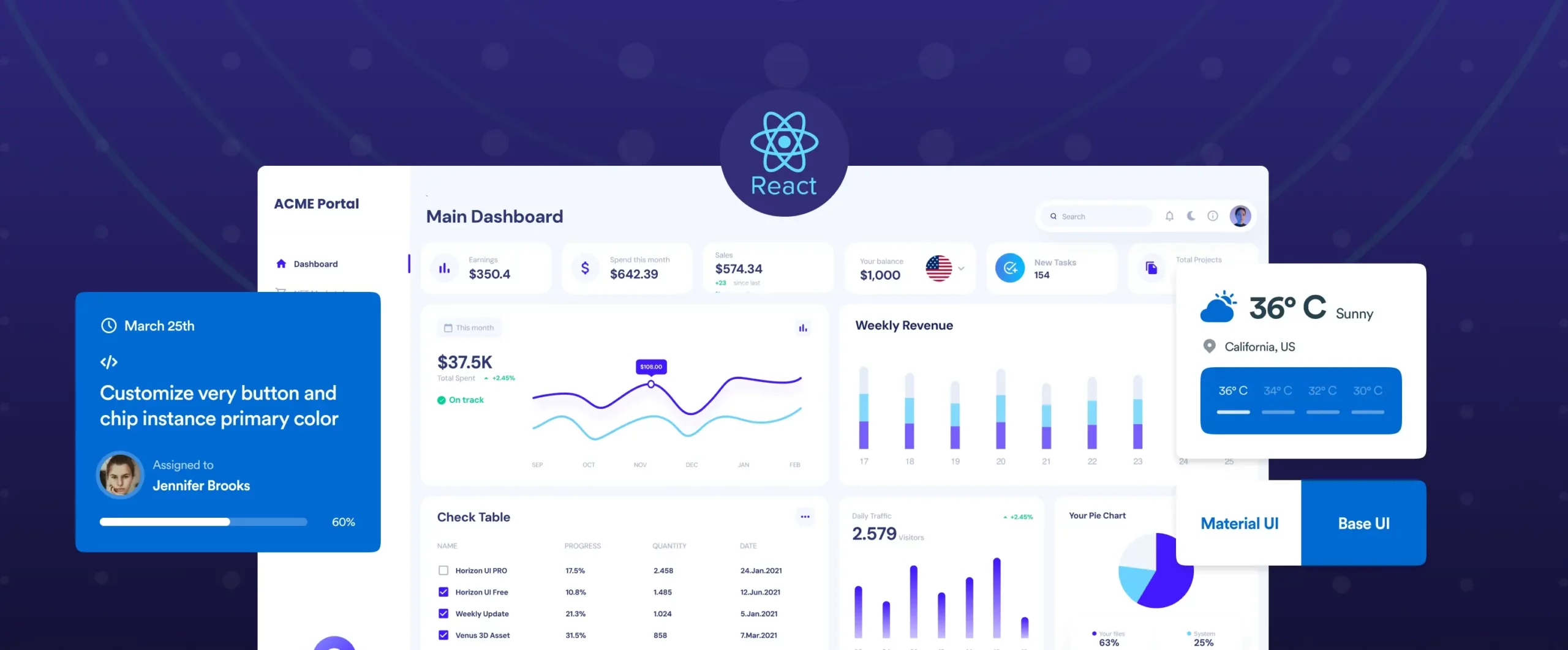

Admin Panels – Purpose, how to build, design practices and more
I remember the first time during an internship when I was tasked with managing an application’s backend operations. I was lost in a maze of spreadsheets, understanding various systems, data warehouses, and endless emails to ensure everything was running smoothly. It was a nightmare until I discovered the power of admin panels. For a period of good one week, this admin panel was, to me, a rockstar, transforming all the chaos into order. In this blog, we will dive into what admin panels are, when to build them, and how to create them effectively.
What is an Admin Panel?
Admin panels, also known as control panels or admin dashboards, are centralized interfaces that allow administrators to manage, monitor, and control various aspects of a software application. They serve as the command center, where administrators oversee operations, manage user data, and ensure the smooth functioning of digital platforms.
A well-designed admin panel can significantly contribute to business objectives. With the proper technology, admins can make decisions that delight customers, extract strategic and financial insights, safeguard user data and privacy, and deliver numerous other business benefits. These tools shouldn’t be relegated to back-office use only; they are integral to driving business value and efficiency.
What is the purpose of an Admin Panel?
The primary purpose of an admin panel is to provide administrators with the tools they need to efficiently manage their systems and applications. Admin panels help streamline operations, improve data accuracy, and enhance productivity by automating routine tasks. They act as a hub for managing content, users, and system performance, ensuring that everything runs smoothly.
Key features of Admin Panels
Admin panels come packed with a variety of features designed to make management tasks easier and more efficient:
- User management: Easily manage user accounts, roles, and permissions. This includes adding new users, editing user details, and assigning roles and permissions to ensure that only authorized users can access specific parts of the system.
Read also: Role-based access control - Data visualization: Display key metrics and data insights through charts, graphs, and tables. This helps administrators quickly understand the performance and health of their systems and make data-driven decisions.
- Content management: Add, update, and delete content efficiently. Admin panels often include tools for managing articles, images, videos, and other types of content to keep the application up-to-date and relevant.
- System monitoring: Track system performance and health in real time. Administrators can monitor server performance, database health, and application uptime to ensure everything is running smoothly.
- Audit logs: Maintain logs of user actions for accountability and transparency. This is crucial for tracking changes, troubleshooting issues, and ensuring compliance with regulations.
Admin Panels vs. Dashboards, GUIs, and CRUD Apps
Admin panels are often confused with dashboards, GUIs (Graphical User Interfaces), and CRUD (Create, Read, Update, Delete) apps, but they serve different purposes:
Admin Panels vs. Dashboards
While admin panels offer comprehensive management tools, dashboards focus primarily on data visualization. Dashboards provide at-a-glance insights into key metrics and performance indicators, but they lack the interactive management capabilities of admin panels.
Admin Panels vs. GUIs:
GUIs are user interfaces that allow users to interact with electronic devices through graphical icons and visual indicators. Admin panels are a type of GUI specifically designed for administrative tasks. All admin panels are GUIs, but not all GUIs are admin panels.
Admin Panels vs. CRUD Apps:
CRUD apps are applications that provide the basic functionalities of creating, reading, updating, and deleting data. Admin panels include CRUD operations as part of their functionality but also offer additional features like user management, system monitoring, and advanced security settings.
When to build an Admin Panel
Scenarios for Custom Admin Panel
- Specific Business Requirements: When off-the-shelf solutions do not meet your unique needs.
- Advanced Security Measures: When enhanced security controls are necessary.
- Integration Needs: When there’s a need to integrate multiple data sources and systems.
Ready-Made vs. Custom Solutions
- Ready-Made Solutions: Quick to deploy but may lack customization.
- Custom Solutions: Tailored to specific needs but require more development time and resources.
Benefits of a Tailored Admin Panel
- Flexibility: Meets unique business processes and requirements.
- Security: Provides better control over data protection.
- Scalability: Supports business growth and evolving needs.
Qualities of a well-designed Admin Panel
- Intuitive Navigation: Easy-to-use interface with clear labels and instructions.
- Accessibility: Designed for all user types, ensuring broad usability.
- Role-Based Access Control: Manage user permissions effectively.
- Data Encryption: Protect sensitive information.
- Customizable Reports: Offer comprehensive reporting options tailored to business needs.
- Uniform Design Language: Maintain consistency across the panel’s layout and design.
- Contextual Help: Provide tooltips and guides to assist users in navigating and using the panel effectively.
How to build an Admin Panel
Here’s a step-by-step guide on how to build an admin panel, covering various methods you can use.
Step 1: Define Objectives and Requirements
Before diving into development, clearly outline what you want to achieve with your admin panel. Identify the key features and functionalities needed, such as user management, data visualization, content management, and security settings. Understanding your objectives will guide you in choosing the right tools and approach.
Step 2: Choose the Right Tools and Technologies
Using Frameworks and Libraries
Frameworks and libraries can significantly speed up the development process. Popular choices include:
React Admin: A frontend framework for building admin interfaces on top of REST/GraphQL APIs, leveraging React.
Django Admin: If you are using Django as your backend framework, it comes with a built-in admin interface that is powerful and highly customizable.
Ruby on Rails Admin: Rails provides ActiveAdmin, a plugin for creating admin panels with minimal effort.
Laravel Nova: A beautifully designed admin panel for Laravel applications, offering a wide range of functionalities out of the box.
Read also: A guide to frontend frameworks
Low-Code Admin Panel Builder
Low-code and no-code platforms are ideal for those who want to build admin panels without extensive coding. Platforms like DronaHQ, Retool, and Bubble offer drag-and-drop interfaces to create fully functional admin panels quickly. These tools often come with pre-built templates and components, making it easier to integrate with existing systems and databases.
Custom Development
For those with specific needs that off-the-shelf solutions can’t meet, custom development is the way to go. This involves writing your own code using web development technologies like HTML, CSS, JavaScript, and backend languages (e.g., Node.js, Python, Ruby). Frameworks like Angular, Vue.js, and Express.js can be used to streamline the process.
Step 3: Design the UI
Designing a user-friendly interface is crucial. Use wireframing tools like Sketch, Figma, or Adobe XD to create a mockup of your admin panel. Focus on simplicity and usability, ensuring that the most important features are easily accessible. Pay attention to the layout, navigation, and overall user experience.
Good read: Import your Figma designs to DronaHQ
Step 4: Develop the backend
The backend is the backbone of your admin panel. Set up a robust and scalable backend using frameworks like Django, Ruby on Rails, or Express.js. Ensure that your database is well-structured and capable of handling the expected load. Create APIs to facilitate communication between the front end and backend.
Step 5: Implement key features
Develop the core features identified in your objectives. This includes setting up user authentication, role-based access control, data management, and any specific functionalities needed for your operations. Use libraries and pre-built components to speed up the development process.
Read also: How to build interactive admin panels
Step 6: Test and optimize
Thoroughly test your admin panel to identify and fix any bugs or performance issues. Use testing frameworks like Jest for JavaScript or RSpec for Ruby to automate your testing process. Optimize the code and UI to ensure a smooth and efficient user experience.
Step 7: Deploy and maintain
Once the admin panel is tested and optimized, deploy it to your server or cloud platform. Monitor its performance and gather feedback from users to make continuous improvements. Regularly update the panel with new features and security patches to keep it effective and secure.
Low-code Admin Panel Case Studies
- Challenge: Managing customer data across multiple platforms without a centralized system.
- Solution: Built a centralized dashboard on DronaHQ, integrating Zendesk, Airtable, and Google Sheets.
- Result: Increased operational efficiency by 66%, reducing task completion time from 45 minutes to 15 minutes.
- Challenge: Handling complex data from various testing equipment and integrating it into a cohesive system.
- Solution: Created a custom application on DronaHQ for data management and reporting.
- Result: Enhanced data accessibility and operational efficiency, streamlining complex data operations.
- Challenge: Manually pulling information from multiple data sources for customer support.
- Solution: Developed two internal tools using DronaHQ to automate data retrieval and reporting.
- Result: Improved accuracy and speed in customer support, reducing manual data entry and enhancing the customer experience.
Explore how DronaHQ can help you build a powerful and efficient admin panel tailored to your business needs. Sign up for a free trial or schedule a demo with our experts today.
FAQs about Admin Panels
Common challenges in Admin Panel development
Building an admin panel is not without its challenges. Here are some common obstacles and how to overcome them:
- Security Concerns:
- Challenge: Ensuring robust security to protect sensitive data.
- Solution: Implement multi-factor authentication, role-based access control, and data encryption. Regularly update security protocols to address new threats.
- Scalability Issues
- Challenge: Designing an admin panel that can handle growing amounts of data and users.
- Solution: Use scalable architecture and technologies that allow easy expansion, such as microservices and cloud computing.
- User Experience
- Challenge: Creating an intuitive and user-friendly interface.
- Solution: Conduct user research and testing to understand the needs and preferences of your users. Implement a clean, consistent design and provide contextual help and tooltips.
- Integration with Multiple Systems
- Challenge: Integrating the admin panel with various data sources and external systems.
- Solution: Use APIs and connectors to integrate different systems smoothly. Platforms like DronaHQ offer pre-built connectors to simplify this process.
- Performance Optimization
- Challenge: Ensuring the admin panel performs well even under heavy load.
- Solution: Optimize database queries, use caching strategies, and perform regular performance testing.
- Maintenance and Updates
- Challenge: Keeping the admin panel updated and maintained.
- Solution: Implement version control and continuous integration/continuous deployment (CI/CD) pipelines to streamline updates and maintenance.
Future trends in Admin Panel Development
The landscape of admin panel development is constantly evolving. Here are some trends to watch out for:
- AI and Machine Learning Integration: Admin panels will increasingly incorporate AI and machine learning to provide predictive analytics, automate routine tasks, and enhance decision-making.
- Increased Focus on User Experience: There will be a greater emphasis on creating more intuitive and user-friendly interfaces, driven by user feedback and advanced UI/UX design principles.
- Enhanced Security Measures: As cyber threats become more sophisticated, admin panels will need to adopt more advanced security measures, including AI-driven threat detection and blockchain for data integrity.
- Customization and Personalization: Future admin panels will offer more customization options, allowing businesses to tailor the interface and functionality to their specific needs.
- Integration with IoT Devices: With the rise of the Internet of Things (IoT), admin panels will need to integrate and manage data from a growing number of connected devices.
Comparison of popular Admin Panel Tools
Here is a brief comparison of some popular tools for building admin panels:
| Tool | Pros | Cons |
| DronaHQ | Low-code platform, easy integration | The learning curve for advanced customization |
| Retool | Highly customizable, robust data handling | Higher cost for larger teams |
| Bubble | No-code, beginner-friendly | Limited scalability for complex projects |
| Firebase | Real-time database, integrated tools | Dependency on Google’s ecosystem |
| AdminJS | Open-source, customizable | Requires coding knowledge |
Each tool has its strengths and weaknesses, and the best choice depends on your specific needs and resources.
Tips for Optimizing Admin Panels
- Keep the Interface simple: Avoid clutter by focusing on essential features and functions. Use a clean, minimalist design to enhance usability.
- Implement responsive design: Ensure that your admin panel is accessible on various devices, including desktops, tablets, and smartphones.
- Use caching strategically: Implement caching to speed up data retrieval and reduce server load.
- Monitor performance regularly: Use performance monitoring tools to identify and address bottlenecks. Regularly update and optimize your codebase.
- Provide comprehensive documentation: Create detailed documentation and tutorials to help users understand and effectively use the admin panel.
- Ensure accessibility: Design your admin panel to be accessible to users with disabilities, following guidelines such as WCAG.












